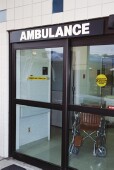Region accounted for 7 to 8 percent of variation in thrombolysis treatment
THURSDAY, July 2, 2015 (HealthDay News) — There is considerable regional variation in thrombolysis treatment for ischemic stroke, according to a study published online June 2 in Stroke.
Lesli E. Skolarus, M.D., from the University of Michigan in Ann Arbor, and colleagues conducted a retrospective cross-sectional study of all fee-for-service Medicare patients with ischemic stroke admitted via the emergency department from 2007 to 2010. Regional thrombolysis rates were estimated and the impact of patient demographics, regional factors, and elements of stroke systems of care on regional variation were investigated.
Over the four-year period there were 844,241 ischemic stroke admissions assigned to one of 3,436 hospital service areas; of these, 3.7 percent received intravenous tissue-type plasminogen activator and 0.5 percent received intra-arterial stroke treatment, with or without intravenous tissue-type plasminogen activator. The researchers observed variation in the unadjusted proportion of patients with ischemic stroke who received thrombolysis, from 9.3 to 0 percent in the highest versus lowest treatment quintiles. There was a weak association for measured demographic and stroke system factors with treatment rates. Region explained 7 to 8 percent of the range in receipt of thrombolysis. About 7,000 additional patients with ischemic stroke would be treated with thrombolysis if all regions performed at the level of the 75th percentile region.
“Future studies to determine features of high-performing thrombolysis treatment regions may identify opportunities to improve thrombolysis rates,” the authors write.
Copyright © 2015 HealthDay. All rights reserved.








